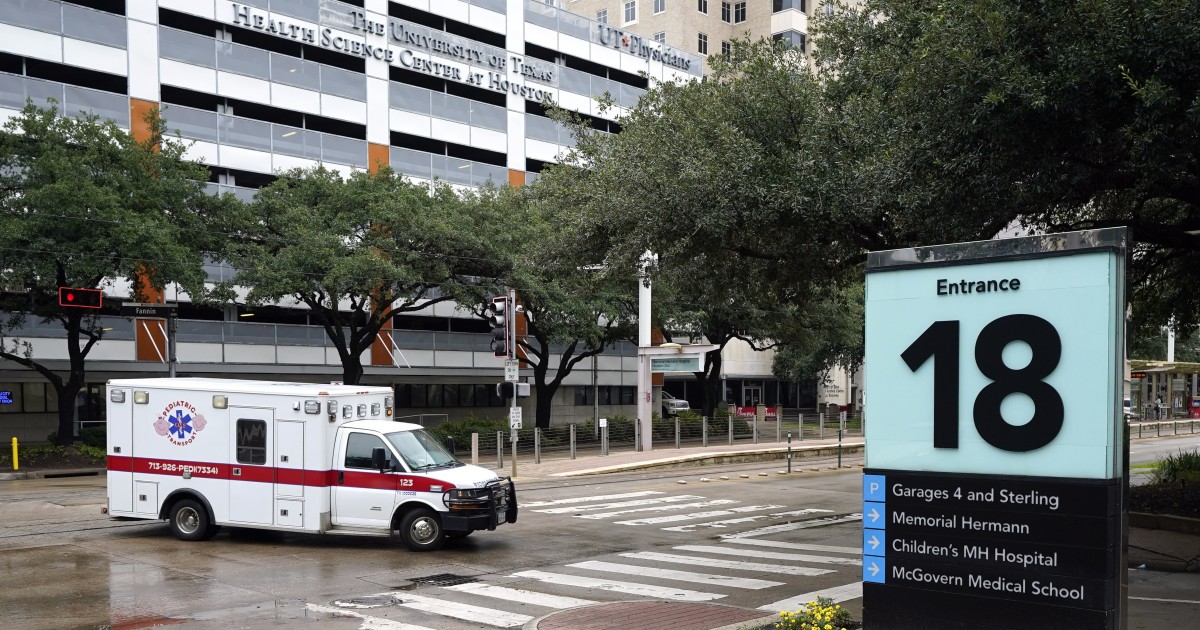
As the coronavirus surges across many parts of the United States, hospitals are feeling the strain. The intensive care unit beds are at 100% capacity in some hospitals and are fast approaching that number in others.
In Florida, 56 hospitals had no available adult ICU beds as of Tuesday. Just over half, 40, were smaller hospitals with no more than 20 ICU beds. But even some much larger hospitals are feeling pressured. Baptist Hospital of Miami had less than 7% of ICU beds available, while Tampa General had only 2%.
In the Houston area, 94% of ICU beds were in use, according to the SouthEast Texas Advisory Council, a coalition of healthcare providers.
Hospitals in Houston could be “overwhelmed” within the next two weeks, Mayor Sylvester Turner said Sunday. “The number of people who are getting sick and going to the hospital has exponentially increased,” he added. “The number of people in our ICU beds has exponentially increased.”
Texas Medical Center, also located in Houston, has 1,362 patients in ICU beds, 600 of whom have COVID-19. That exceeds the 1,330 ICU beds that TMC has in non-pandemic times. However, TMC has plans to mobilize another 877 beds for intensive care if necessary.
“As the number of positive cases continues to climb across our community, Memorial Hermann continues to pivot and plan accordingly,” said a spokesperson for Memorial Hermann hospital, part of TMC. “We are actively expanding our available ICU capacity to help care for the growing number of COVID-19 positive patients in our facilities.” She also stated that Memorial Hermann was rescheduling some less urgent surgical procedures.
The Dallas-Fort Worth area is in better shape, but officials there are concerned about the rate of COVID-19 growth.
“We are currently at 73% occupancy in ICU beds, with approximately 1,750 COVID-19 patients in North Texas,” said Dallas-Fort Worth Hospital Council President/CEO Stephen Love. “However, we’ve had a 2.5 times increase in COVID-19 patients over the last three weeks.” He anticipated that hospitals would have to implement plans they have in place to deal with the surge in two to three weeks.
In late June, Dr. Cara Crist, director of the Arizona Department of Health Services, announced that hospitals could activate “crisis of care” standards as the coronavirus surged. This enables hospitals to allocate scarce resources based on factors such as the likelihood that a patient will survive.
The department’s website reports that 9 out of every 10 ICU beds are occupied in the state. However, it has held steady at that rate for the last week.
Yet what occurs at the state level is not always reflected at individual hospitals. The ICU unit at Banner University Medical Center Phoenix has exceeded capacity. Critically ill patients are being rerouted to the emergency room or surgery recovery rooms.
The same holds true for South Carolina. In the southeastern corner of the state, roughly 83% of acute care beds are filled in hospitals in both Georgetown and Horry counties, according to the South Carolina Department of Health and Environmental Control. ICU beds are considered acute care beds, although not all acute care beds are part of a hospital’s ICU.
But Tidelands Health, which serves parts of Horry and Georgetown counties, announced on July 1 that the number of its COVID patients had increased from three to 40 in only two weeks. That has increased again in the last week.
“We have 50 COVID-19-positive patients today, with another 11 awaiting test results,” said Dawn Bryant, a senior communications strategist for Tidelands. “Our ICUs are at 96% capacity.”
A few places are seeing some modest improvement. A press release issued June 19 by the Health District of Yakima County in Washington stated that county hospitals were “exceeding capacity” due to the “highest rate of COVID-19 infections” in the state.
On Tuesday, a spokesperson for the health district said that while conditions at Yakima County hospitals can change from day to day, “As of today, our county is stable [regarding] hospital capacity.”
